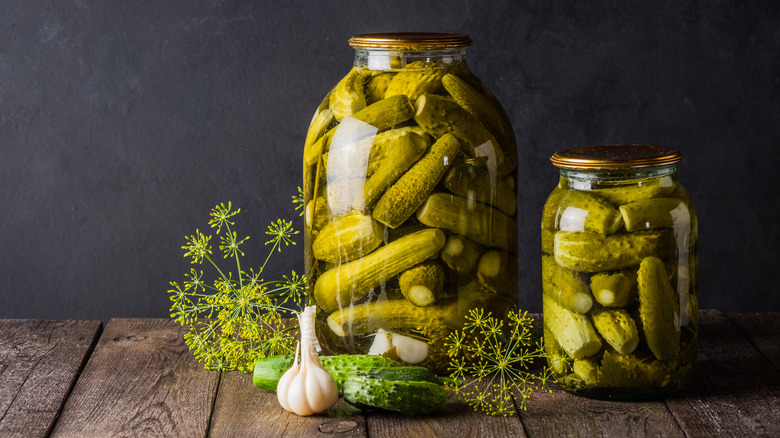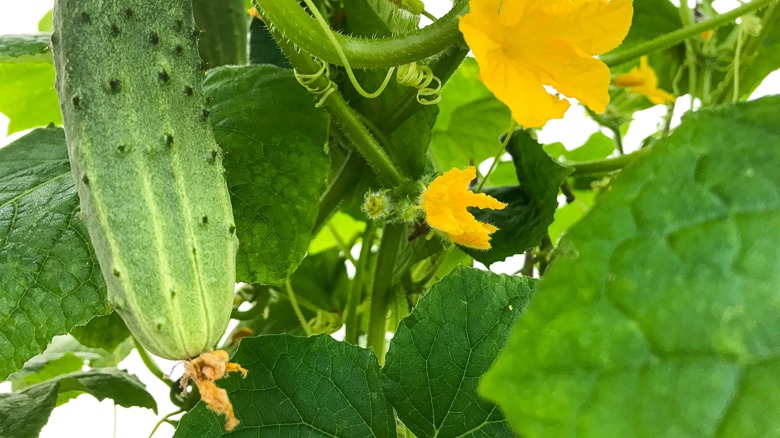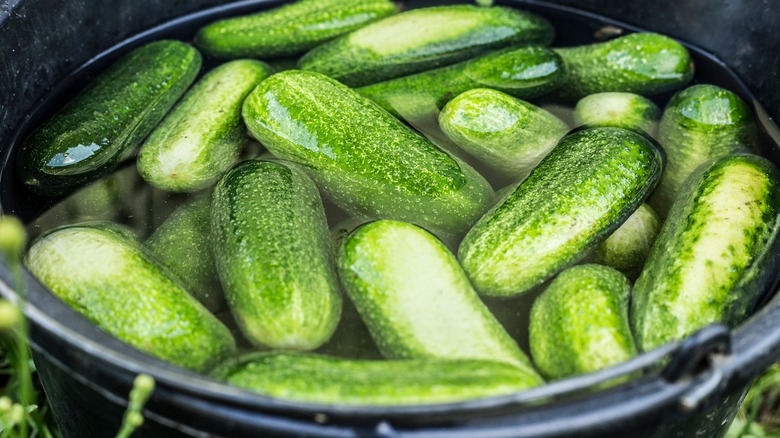The Simple Prep Tip For Crunchier Homemade Pickles Every Time
Nothing ruins the joy of cracking open a fresh jar of pickles more than biting into the first one only to discover that they've gone soft and mushy. Whether they're traditionally pickled with vinegar or fermented in salt water, the whole point of pickles is the satisfying crunch. So without it, well, you've just got soggy disappointment in a brine.
This is why it's super important that you pay attention to this fundamental prep tip the next time you make pickles. And while yes, there are plenty of ingredients that people add to try and maintain the cucumbers' crunch as the veggies transform into pickles, what you get rid of is more important than any additives. So feel free to skip the grape leaves, alum, and food-grade lime in favor of chopping off the blossom. Doing so is akin to the old saying: An ounce of prevention is worth a pound of cure. By removing the cucumber blossoms, you're preventing a common enzymatic process that's at the root of squishy pickles.
What exactly is the blossom and how do you remove it?
If you're inspecting your pickling cucumbers right now and looking to remove the blossom to ensure crispiness, you might be confused. That's because the term blossom refers to the stems and flowers that are attached to cucumbers as they grow out of the vine. So even though there aren't likely to be any blossoming flowers still attached to the veggies — and even if there were you certainly wouldn't be including them in the pickle jar — that little nub on the blossom end can be responsible for making pickles go soggy. That's because it contains an enzyme called pectinase, which acts to break down the naturally occurring pectin that makes cucumbers (and by extension pickles) crunchy in the first place.
You can eliminate the pectinase enzyme, and the softening that it causes, by cutting the blossom end off cucumbers that you'll be pickling or fermenting. But you want to cut off a little bit more than just the visible nub that is left on a mature cucumber. Be sure to also trim 1/16 of an inch off the blossom end of the cucumber.
Should you give your cucumbers an ice bath?
Although firming agents become largely unneeded as long as fresh cucumbers are used, the blossom end is removed, and quality recipes are followed, you may still want to give your veggies an ice bath before pickling them. An ice bath will help get the cucumbers as firm as possible without adding any potentially harmful chemicals. And it's super easy to do — just immerse them in ice water for four to five hours before you plan to start the pickling or fermenting process. Or, if you'd rather, pack them in crushed ice for the same amount of time.
In addition to removing the blossom end and soaking the cucumbers in ice, always be sure to follow tested recipes when canning pickles (or anything else). If you don't feel up to following the heat processes in those recipes exactly, then it's best to make quick refrigerator pickles instead, which don't last as long but are still super tasty.


